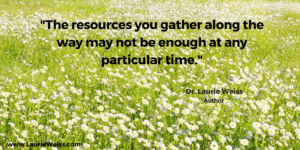Yesterday I used the basic Logosynthesis process when I could not stop thinking about a slightly uncomfortable encounter I had earlier in the day.
I had been judging my own actions about both protecting and not protecting my own boundaries.
 The process worked and I didn’t give the encounter another thought until this morning when I was in the car with my husband, returning to the place where the encounter occurred. Then I started obsessing about it again.
The process worked and I didn’t give the encounter another thought until this morning when I was in the car with my husband, returning to the place where the encounter occurred. Then I started obsessing about it again.
Jonathan is also a Master Logosynthesis Practitioner and I shared my story with him. We searched for what was still undone, couldn’t find anything, and I realized that the difference was that the entire issue was no longer a secret. Sharing it was what had been left out and was now complete.
Later I was reminded of a Brené Brown technique of sharing old feelings of shame with a “shame-buddy” as part of a process to resolve them. I wondered if my experience was similar to this process. Once I shared something after my initial work, it vanished.
Logosynthesis can certainly be used alone as a self-coaching technique. However, it was originally developed as a tool a therapist could use. I think that it may be important to use it with a “buddy” when a problem isn’t easily resolved.
This link will take you to an example of a partner leading you through the Logosynthesis process from Letting It Go: Relieve Anxiety and Toxic Stress in Just a Few Minutes Using Only Words (Rapid Relief with Logosynthesis®)
This paragraph is a comment I wrote about a passage on Page 58 of Letting It Go. You can see the passage in the book. You can also see the excerpt here. This link will take you to Bublish.com, where I regularly publish comments on parts of this book. This is a site where authors share of their work. You can subscribe to my musings, there, as well as to the musings of many other authors. It’s a great place to learn about new books and I recommend that you visit.
